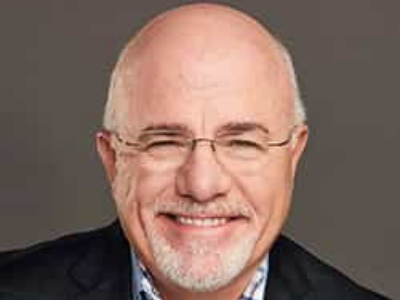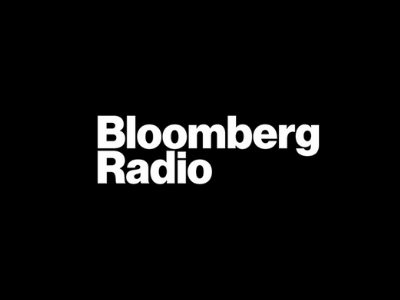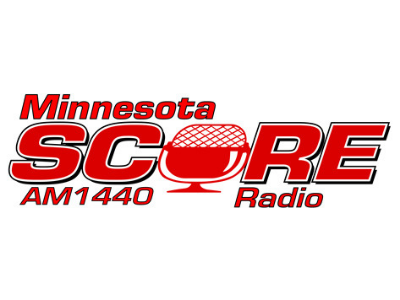It’s always been hard to make it as an artist in America – and it’s becoming only harder
News > Business News

Audio By Carbonatix
7:43 AM on Friday, October 31
By Joanna Woronkowicz
(The Conversation is an independent and nonprofit source of news, analysis and commentary from academic experts.)
Joanna Woronkowicz, Indiana University
(THE CONVERSATION) “Being an artist is not viewed as a real job.”
It’s a sentiment I’ve heard time and again, one that echoes across studios, rehearsal halls and kitchen tables – a quiet frustration that the labor of making art rarely earns the legitimacy or security afforded to other kinds of work.
I study how artists work and earn a living in the United States. In a country that valorizes creativity yet neglects the people who produce it, I’ve seen how artists are left to navigate a system that treats their calling as a personal gamble rather than a profession worth supporting.
“I wish this country supported artists,” one artist told me. “Look how good it could be if culture was celebrated.”
The reality is that for many artists, the dream of sustaining a creative career now comes with steep odds: volatile income, limited benefits and few protections against technological or market shocks.
Some countries have begun to recognize this and act accordingly. South Korea, for instance, introduced its Artist Welfare Act in 2011 and expanded it in 2022, creating mechanisms for income stabilization, insurance coverage and protection against unfair contracts.
Such examples show that insecurity is not an inevitable feature of artistic life – it’s a symptom of policy choices.
My new book, “Artists at Work: Rethinking Policy for Artistic Careers,” uses U.S. labor force data to show how building a creative career has become an increasingly risky pursuit – and how smarter policies could make it less so.
A fragile profession
About 2.4 million Americans are artists, or roughly 1% of the workforce in 2019. This figure includes individuals whose primary occupation falls within an artistic field – such as musicians, designers, writers, actors, architects or visual artists – according to the U.S. Bureau of Labor Statistics. It’s likely an undercount, since many artists hold jobs outside of the arts to support their creative work.
But even before the COVID-19 pandemic, the number of working artists was already falling. Between 2017 and 2019, formal employment in these fields dropped from 2.48 million to 2.4 million, a quiet contraction that reflected shrinking opportunities and growing instability across creative fields.
When COVID-19 hit, that slow decline turned into a collapse. The arts economy shrank by 6.4% in 2020 – nearly twice the overall U.S. rate of decline – and more than 600,000 jobs disappeared. For artists, the pandemic didn’t create new problems so much as reveal how little of the safety net reached them in the first place.
Health insurance is one example.
Most artists are insured, but roughly 20% buy coverage on their own, compared with about 10% of all U.S. workers. When the Affordable Care Act expanded access to individual plans, artists’ coverage rates improved significantly – a reminder that good policy can make a real difference for this workforce.
Even this modest progress is now under threat: With enhanced marketplace subsidies set to expire and the current government funding impasse looming, individual premiums under the ACA could more than double for many enrollees next year.
Education doesn’t provide much protection either. Artists are among the most educated groups in the labor market – about two-thirds hold at least a bachelor’s degree – but their earnings don’t rise as much with each level of education as those of other professionals. Research shows that even artists with graduate degrees earn lower pay and face sharper income swings than workers with similar schooling in other fields.
Artists almost by definition juggle multiple roles. In 2019, about 8% held more than one job – compared with 5% of all workers – and roughly 30% worked part time in different types of jobs. Many combined teaching, freelance projects and contract gigs to piece together something close to full-time work.
My research shows that self-employment is far more common among artists than among other workers. Yet many go independent not because they crave entrepreneurship but because it’s the only option available. The top industries employing artists include professional and technical services, arts and entertainment, information and retail.
In other words, artists often move between arts and non-arts jobs, teaching by day or working service shifts at night, just to keep their creative practice alive.
Existing labor laws assume a steady paycheck
Most U.S. labor protections – health insurance, paid leave, workers’ compensation and retirement benefits – are tied to full-time, W-2 employment. But few artists work that way. They rely on gigs that don’t fit neatly into existing systems: short-term contracts, productions with limited runs such as musicals or film shoots, and one-off project fees.
Existing rules simply do not support professional artists.
Because employers don’t pay into unemployment funds for contractors or freelancers, most artists are ineligible for unemployment insurance.
Copyright law was originally written with publishers and record labels in mind, leaving visual artists without royalties when their work is resold. Existing copyright law is being challenged by artists and record labels, who are claiming their work was used to train AI models without permission, favoring tech companies that say these tools will “democratize” artmaking.
The tax code, meanwhile, lets collectors deduct the full value of artwork they donate, but limits artists themselves to deducting only the cost of materials.
Public funding of the arts, from the New Deal’s Federal Art Project to the creation of the National Endowment for the Arts, has come in brief bursts – but is often first on the chopping block during economic downturns.
Together, these examples reveal a century-long pattern: The U.S. celebrates art but neglects artists. Instead of treating creative work as legitimate labor, the country’s policies fail to offer artists stability or protection.
Labor policy that values artists
If labor policies have largely ignored artists, it’s because policymakers start from the wrong place. Too often, artists are asked to justify their worth by proving that they drive tourism, raise property values or fuel innovation. That logic turns creative work into a tool for someone else’s goals.
In my view, a better starting point is the right to choose creative work. The ability to select one’s occupation freely – and to make a living doing meaningful work – is, to many Americans, as fundamental as freedom of speech. Yet the structure of U.S. workforce policy makes that choice nearly impossible for many artists.
A more coherent approach would treat the arts as part of the nation’s labor system, not an afterthought. One policy change could require benefits such as health care, unemployment insurance and retirement savings to be portable – following the worker, not the employer. Laws could protect freelancers from late or missing payments, such as New York’s Freelance Isn’t Free Act. And tax and copyright policies could give artists the same chance to profit from their work that investors and corporations already enjoy. Many European countries already do this through “droit de suite” laws, which grant visual artists a small royalty each time their work is resold – ensuring that creators, not just collectors, can reap the rewards of the long-term value of their art.
Designing policies around how many artists actually work – project by project, contract by contract – would make it possible for more people to build sustainable careers in the arts. It would also make the sector more inclusive, drawing talent from across social classes rather than only from those that can afford to take the risk.
But I think policy change also requires a shift in mindset.
Viewing artists not as special cases or economic tools, but as workers exercising a basic human right – the right to choose their work – strengthens both culture and democracy. To me, the central question is not whether artists deserve help because their work enriches others, but whether every individual should have the freedom to make a living through work that gives life meaning.
This article is republished from The Conversation under a Creative Commons license. Read the original article here: https://theconversation.com/its-always-been-hard-to-make-it-as-an-artist-in-america-and-its-becoming-only-harder-266138.





